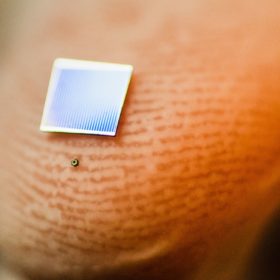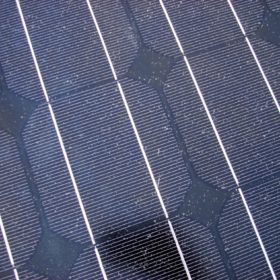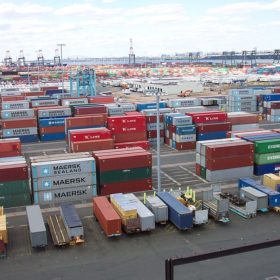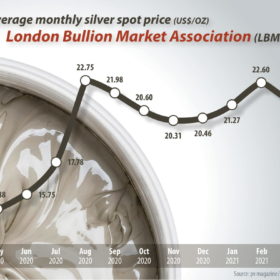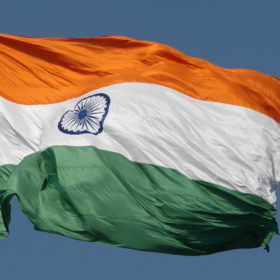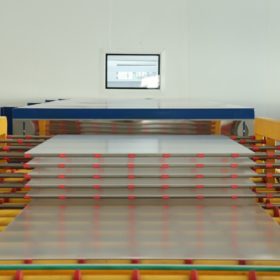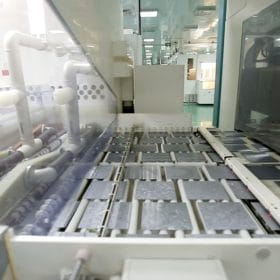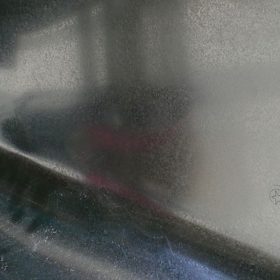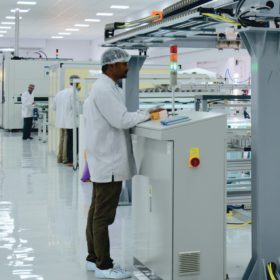Micro III-V solar cell with 33.8% efficiency
Developed by a French-Canadian research group, the triple-junction cell is based on indium gallium phosphide (InGaP), indium gallium arsenide (InGaAs) and germanium (Ge) and has an active area of only 0.089 mm2. It can be used for applications in micro-concentrator photovoltaics (CPV).
Compressed air tech for solar module cleaning, cooling shows promise in India field-testing
British scientists have reported significant restoration of the panel performance with the experimental compressed air system developed by them for the simultaneous cleaning and cooling of PV modules. The system was built with a compressed-air unit which was made of a compressor, an air tank, and an airflow regulation valve, and a series of nozzles. The technique was tested on a PV system located in northwestern India.
India launches anti-dumping probe for solar cells from China, Thailand and Vietnam
The Directorate General of Trade Remedies (DGTR) under the commerce ministry stated the Indian manufacturers provided sufficient evidence to warrant the initiation of an investigation into the alleged dumping of solar cells. The investigation will aim to determine the existence, degree and effect of the dumping and recommend an amount of anti-dumping duty to offset the material injury to domestic manufacturers.
The long read: All that glitters is HJT
The devil is in the details, as they say, and when it comes to the next generation of mass-produced, high-efficiency PV cells, silver costs may be devilishly hard to reduce. Making things worse, prices for the precious metal are now heading in the wrong direction.
Cabinet approves INR 18,100-crore incentives for advanced battery storage production
The production-linked incentive scheme for battery storage, with an outlay of INR 18,100 crore (US$ 2459 million), is intended to build a cumulative 50 GWh of advanced chemistry cell (ACC) and 5 GWh of ‘niche’ ACC production facilities in India.
Solar glass maker Borosil Renewables bags national award
The government of India has recognized the manufacturer for the development and commercialization of 2mm thick fully-tempered solar glass, Selene anti-glare solar glass, and Shakti solar glass in matt-matt finish.
Production-linked solar incentive scheme to support just 8-13% of 240 GW panel demand till FY30
India has set a ‘280 GW by 2030’ solar target, out of which 240 GW is yet to be implemented. India Ratings estimates the PLI scheme shall provide incentives to the beneficiary facilities for an aggregate sales of 20-30 GW over a five-year period, which is just 8%-13% of the planned 240 GW requirement.
JSW’s steel production dips as it prioritizes medical oxygen supply
The company’s capacity utilization was 5% lower than in March as it prioritized medical oxygen supply over augmenting steel production.
IREDA to launch call for applications under the production-linked solar incentive scheme soon
Indian Renewable Energy Development Agency Ltd (IREDA), the implementing agency for the Production Linked Incentive (PLI) Scheme, would soon issue the selection document for solar manufacturers who wish to apply for state cash to set up production lines in India.
Bolivia launches call for lithium extraction
Bolivia has launched a second international call, after a first attempt failed in 2019, to seek potential investors for its huge lithium resources.
